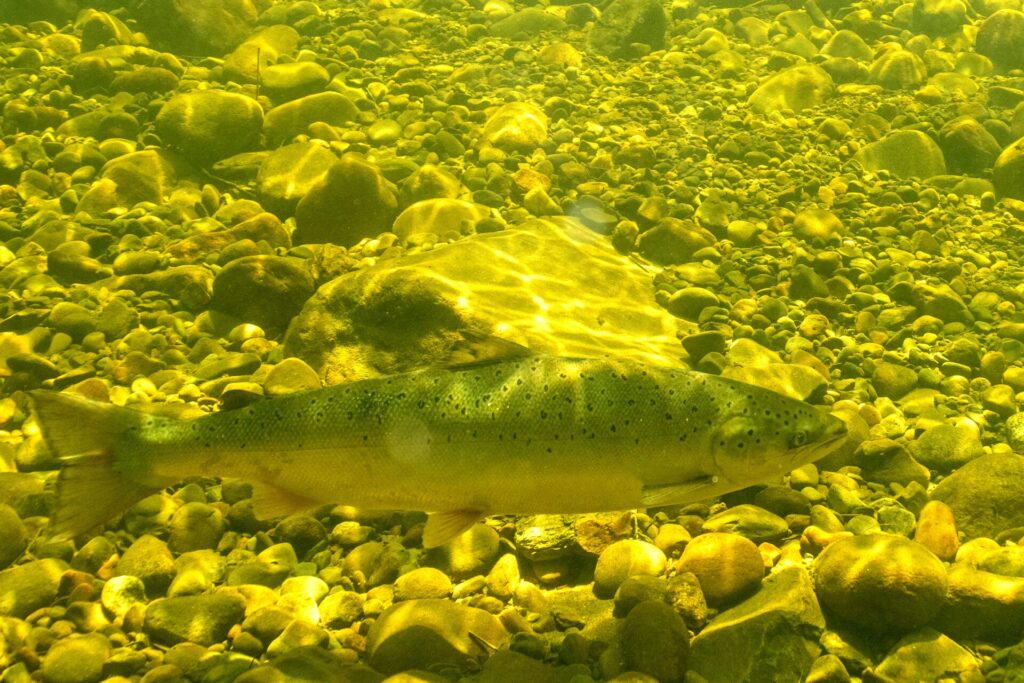Jefferies P-199
General information | |
| Waterway |
Cooper River |
| Current status | Active license |
| Type of facility | Conventional Hydro |
| Mode of hydropower generation | Run-of-river/Peaking |
| Type of permit | FERC License |
FERC information | |
| FERC docket # | P-199 |
| FERC project name | Santee-Cooper |
| Other projects with this FERC number | |
| Permit issued | 5/4/79 |
| Permit expiration | 3/27/06 |
Ownership and operation | |
| Owner | South Carolina Pub Serv Auth |
| Owner type | State |
| Year first online (conventional hydro) | 1942 |
| Transmission or distribution system owner | South Carolina Public Service Authority |
Power and generating capacity | |
| Number of units | 5 |
| Total capacity from hydraulic turbine-generator units within each plant | 145.2 MW |
| Average annual net hydropower generation | 275,083.9 MWH |
Background
The Santee-Cooper hydropower project is located in Southeast South Carolina within Berkeley, Calhoun, Clarendon, Orangeburg, and Sumter counties. It is operated by South Carolina’s state owned electric and water utility, Santee-Cooper Public Service Authority.
Construction was completed in the late 1930s, and the project started generating electricity on February 17, 1942. It consists of two reservoirs. The upper reservoir, Lake Marion, is formed by the Santee Dam on the Santee River. It is the largest lake in South Carolina with a shoreline of 315 miles inundating over 110,000 acres. The lower reservoir, Lake Moultrie, is formed by Pinopolis Dam on a diversion canal from Lake Marion within the Cooper River drainage. The project diverted nearly all the water from the Santee River into the Cooper River. In total, the project flooded over 177,000 acres of land, from which 200,000,000 board feet of timber was removed. At the time, it was the largest land clearing project in the nation.
Although the Santee-Cooper project is one of the largest of its kind on the east coast, it produces relatively little electricity. The eight mile long Santee Dam facility has the capacity to produce only 1.92 megawatts of electricity. The Pinopolis Dam facility stretches approximately four miles in length and contains five turbines that generate 116 megawatts of electricity.
By diverting the majority of water from the Santee River, one of the largest on the Eastern seaboard, to the small tidal Cooper River, the Santee-Cooper project virtually eliminated the lower 90 miles of the Santee River and transformed the Cooper River into a major freshwater river. Although a re-diversion canal was constructed in the early 1980s, allowing 80% of the water entering Lake Moultrie to be redirected back to the Santee River, these flows are not dependable and are based on hydroelectric needs, not on the needs of the Santee River ecosystem.
Water Quality
Even though some flow was restored to the Santee River in the 1980s through the re-diversion project, 37 miles of the river upstream from the canal only has a 500 cubic feet per second flow requirement. 500cfs is roughly 3% of the Santee’s natural flow. This has severely impaired aquatic habitat and has negative effects on migratory fish such as American shad, blueback herring, striped bass, and the federally endangered short nose sturgeon. These flows have also been insufficient for flooding bottomland forests that border what used to be one of the largest rivers on the Atlantic coast.
Recreation
Lake Marion and Lake Moultrie provide some of the best hunting and fishing opportunities in South Carolina. State record channel catfish, blue catfish and largemouth bass have been caught in Lake Marion. Thousands of waterfowl find shelter within the basin’s extensive floodplains including within the Santee National Wildlife Refuge located on the northern shore of Lake Marion. Both lakes are popular destinations for boaters. Due to low and inconsistent flows, recreation is limited on the Santee River.
Endangered Species
A number of conservation listed plant and animal species are found within the Santee-Cooper River Basin including numerous mussel species and the federally endangered short nose sturgeon.
Is there something you’d like to add or correct? Please let us know.
News and updates
From Trout Unlimited4/24/2024
From Idaho Rivers United4/22/2024


